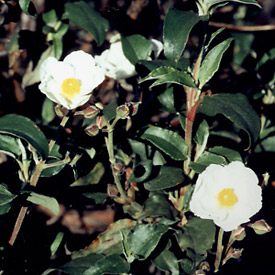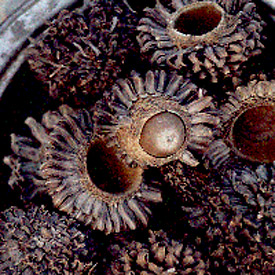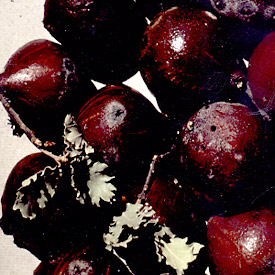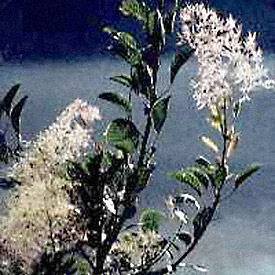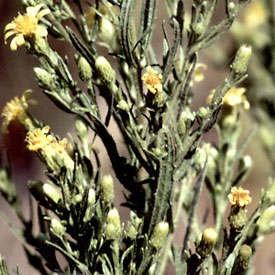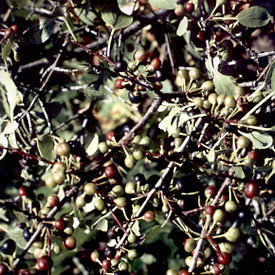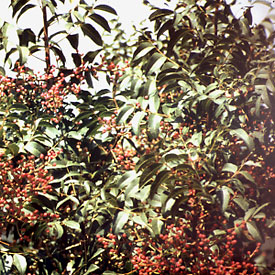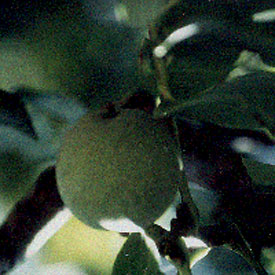
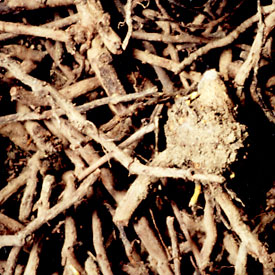
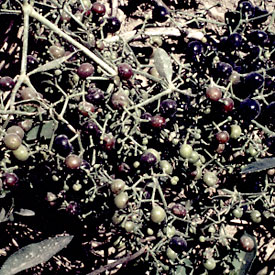
MADDER - RUBIA TINCTORUM L.
Türkish: KIRMIZI KÖK, KÖKBOYA, BOYALIK
Grows in South and Southeastern Europe, around the Mediterranean, Asia Minor, Kaukusus, China, Japan, North and South America.
Material used for dying:
the at leasttwoyears old roots, dried.
Chemical dyestuffs:
23 different anthraquinones and 6 glycosides
The most important dystuffs:
alizarin, purpurin, pseudopurpurin, rubiadin, munjistin
Colors dyed:
rose to brown-reds on an alum mordant, depending on the temperature of the dye bath and the hardness of the water; shades of violet on a mordant of iron salts in a cold dying process and subsequent treatment in a Suspension of wood ash

FÄRBERRÖTE, KRAPP Oberirdisch - RUBIA TINCTORUM L.
Türkisch: KIRMIZI KÖK, KÖKBOYA, BOYALIK
Heimisch in Süd- und Südosteuropa, Mittelmeergebiete, Kleinasien, Kaukasus, China, Japan, Nord- und Südamerika.
Pflanzenteile zum Färben:
Die mindestens 2-jährigen getrockneten Wurzeln.
Färbende Inhaltsstoffe:
23 verschiedene Anthrachinone und 6 Glykoside
wichtigste Färbestoffe:
Alizarin, Purpurin, Pseudopurpurin, Rubiadin, Munjistin.
Farbtönungen:
rosa bis braunrote Farbtöne auf Alaunbeize in Abhängigkeit von der Temperatur der Färbeflotte und der Wasserhärte. Violette Farbtöne auf Eisensalzbeize ohne Erhitzen der Färbeflotte und Nachnuancierung mit Holzasche.
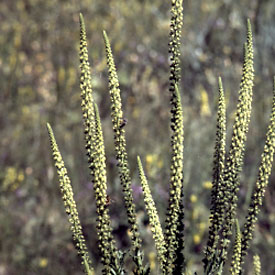
DYER'S WEED OR WELD - RESEDA LUTEOLA L.
Türkish: MUHABBET ÃIÃEGI
Grows in Central and Southern Europe, originallyonly around the Mediterranean and Western Asia. In 1985 in the region of Tkat, Corum and Sivas, enormous areas of wild Reseda were seen.
Material used for dying:
the whole plant.
Chemical dyestuffs:
luteolin, abigenin, isorhamnetin, kampferol
Colors dyed:
brilliant yellows on an alum mordant that are very fast.
Dyer's weed is one of the most important sources for yellow dyeson Anatolian carpetsand flatweaves
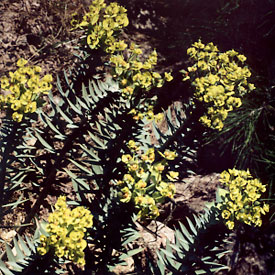
SURGE - EUPHORBIA BIGLANDULOSA L.
Türkish: SÜTLEGEN
Grows in Western and Southern Anatolia.
Material used for dying:
Die ganze oberirdische Pflanze
Chemical dyestuffs:
Quercetin, Kämpferol
Colors dyed:
pale, color-fast yellows
From personal investigation, Euphorbia was still known by dyers in 1975 in the area of Dazkiri, but it was longer being used, as the dyers feared the caustic effects of the plant's sap.
